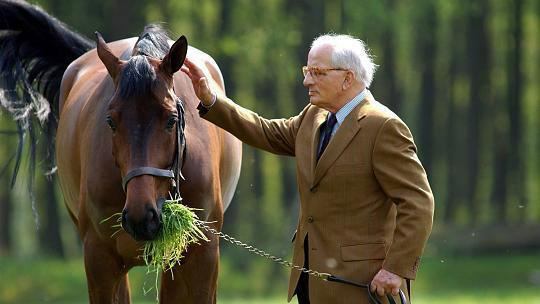Five-time Olympic gold medalist Hans Günter Winkler has died in Germany after a long illness, only two weeks before his 92nd birthday.
Winkler is the only equestrian competitor in any discipline to compete and win medals in six different Olympic Games. He is best known for his partnership with the great mare, Halla who he rode at his first Olympics in 1956.
Judith Draper tells the story in her Showjumping – Records, Facts and Championships:
“Halla’s first two Olympic gold medals were won in extraordinary circumstances at the 1956 Stockholm Games. In the first round, the mare was one of the very few horses to come successfully through the difficult treble at 12, but the effort perhaps left her and her rider, unbalanced for the next fence. Although she cleared it, Winkler returned somewhat heavily into the saddle, tearing a muscle and sustaining a groin injury. Racked with pain he was unable to help Halla at the 14th and final fence, where she made her only mistake. Winkler left the ring doubled up with pain but to an ovation – Halla was the only horse to have negotiated the course with just 4 faults which put her in the lead at the halfway mark of the competition. It was evident when Winkler went in to ride his second round that he was still in great pain. Eye witnesses reported that all he could do was to point the mare in the right direction, sit as still as he could and leave the rest to her – riding as such being quite out of the question. Incredibly the mare, seeming to understand her rider’s plight, simply carried him round, jumping the entire course without an error.”
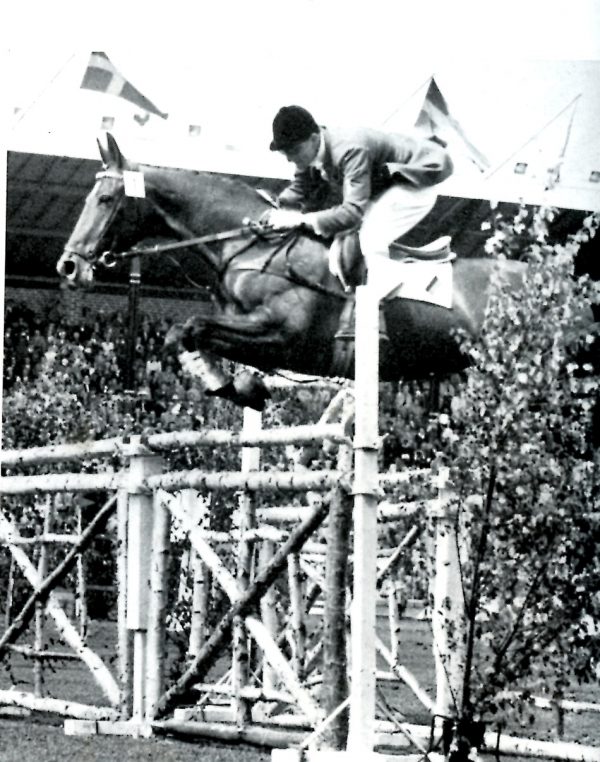
Halla at Stockholm
Today, you doubt that Halla would have even been tried. She was born in 1945, by a trotting stallion, but became a steeplechaser for two seasons. Out of 15 starts she was placed five times, winning once over 3400 metres.
The Germans were looking for Eventers for the 1952 Games, but she had no intention of doing anything like dressage, and went to Hans Günter Winkler, and the rest is history. She had 125 wins, three Olympic gold medals, two World Championships, eight Nations Cups, a Hamburg Derby, the German National Championship, and the Grand Prix of Aachen and Rome.
Winkler won team gold at the 1960 Olympics in Rome and the 1964 Games in Tokyo and led Germany to team bronze in 1968 in Mexico City. He claimed team gold again at the 1972 Olympics in Munich and team silver in Montreal in 1976.
Following his retirement from competition Winkler became a popular trainer and set up a successful event marketing and management company. He was a member of the German Equestrian Federation’s Jumping Committee, a great supporter of youth development in the sport and was awarded the Order of Merit of the Federal Republic of Germany.
“Hans Günter Winkler has been a great sportsman during his career, and likewise, after he had retired from his active time, he did a tremendous lot for our sport, in particular for the juniors”, German Equestrian Federation President, Breido Graf zu Rantzau said.
In the 1993/94 edition of l’Année Hippique, Hans Günter Winkler
set out his views on where the sport was at:
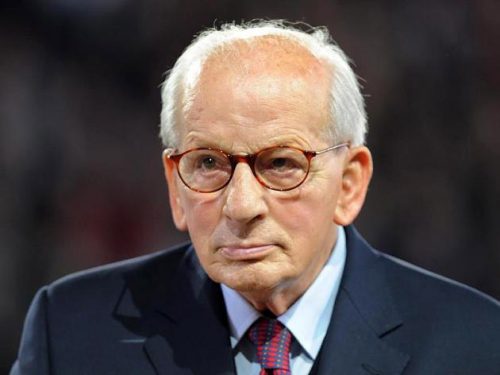
The rapid growth of showjumping after the Second World War can best be shown by theses two figures – in the period after World War II in Germany there were about sixty shows per year in which equestrian sport was featured, today there are some 3,500.
For many years it was the agricultural sphere where equestrian sports took root. Today riding is a people’s sport, equally popular in town and country.
Post-war sport was characterized by the all-rounder. That is to say: riders had an all embracing basic training. Thus it was possible that with great personal commitment and riding skill, enormous success could be achieved even with horses which were not always very highly talented.
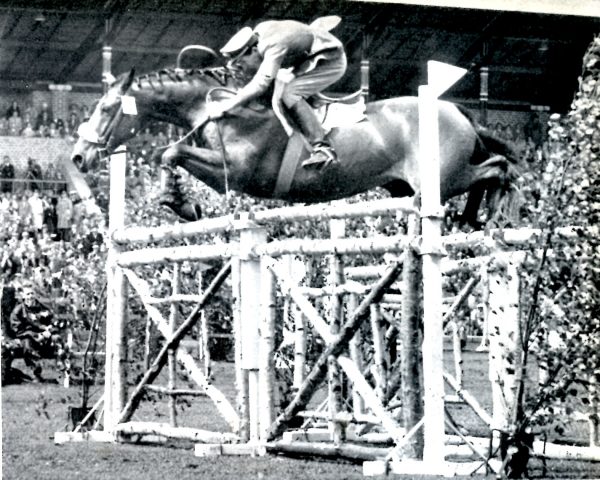
Raimondo d’Inzeo and Merano
And there were partnerships who determined the sport, who – and I refer especially to the post-war period – have become symbols of the sport. With this I am thinking particularly of riders and horses like Raimondo d’Inzeo and Merano, Fritz Thiedermann and Meteor and Francisco Goyaga with Fahnenkönig. They earned equestrianism hitherto unknown popularity, which was made possible through media coverage.
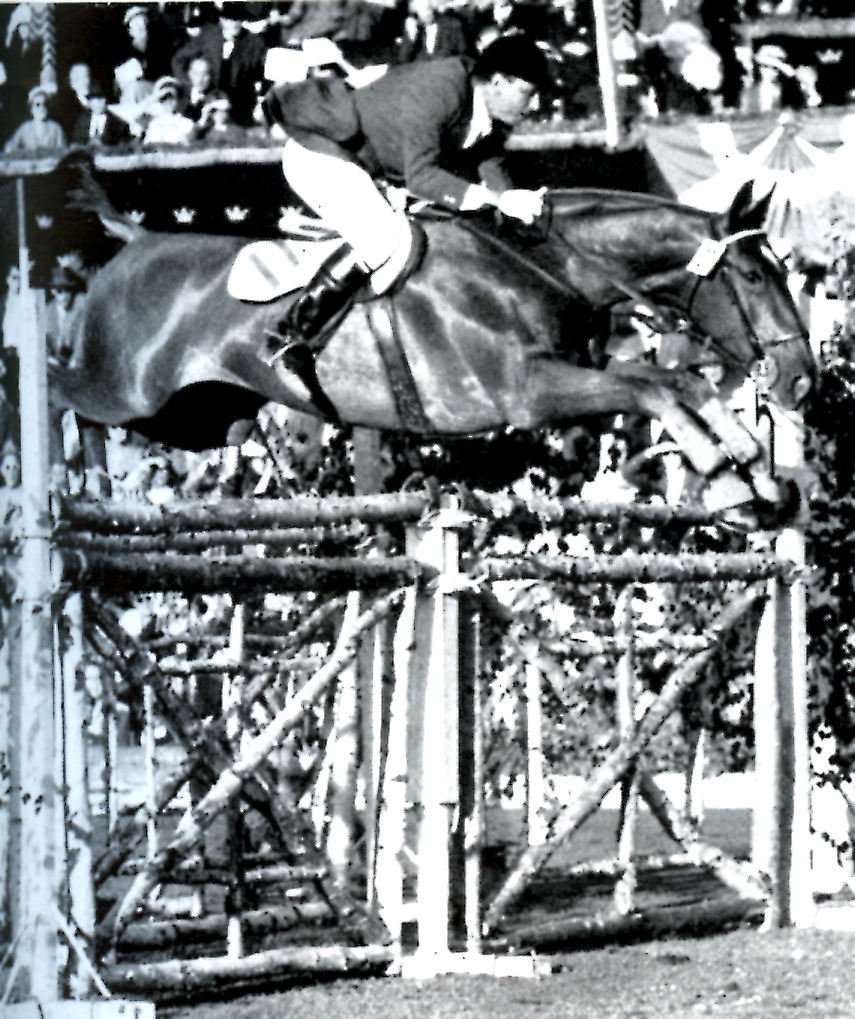
Francisco Goyaga and Fahnenkönig
The breeders who up to the sixties, because of discontinuation of mounted units in the army, mainly bred horses for agriculture, had to switch to new breeds owing to the growing use of tractor. Specialization was the need of the moment, and the breed societies recognized the mood of the times. Stallions, up to then admitted for breeding on account of their conformation, now had to take performance tests and were accepted as fit for breeding only if they had outstanding qualities. Highly qualified mares were another foundation stone for successful breeding. Year after year breeding placed new emphasis on sport, and gradually there appeared a genuine collaboration between breeders and sport which hitherto had not, or had only on a very small scale, existed.
The new situation however had its effects also in the way of riding. Before, the jumps had been large, tall and bulky with deep cups. determined by the type of warmblood horses especially used by us; but now owing to the increasing use of first class blood horses the quality was decisively improved.
Apart from easier handling, more blood also brought a high measure of sensitivity.This called for sensitive riders and a lighter way of riding.
All this of course took time and developed little by little. But to be fair, it must be said that this process was limited to Germany, Holland, Belgium and Austria, as in France, England, Ireland and the USA always more blood had been used or there was a larger stock of light riding horses.
On account of the higher qualities in all respects the obstacles became lighter and lighter and the courses more technical.The principle “higher and higher, broader and broader” however was not applied because fortunately the attitude towards the animal also was changing.
Furthermore, riding developed into a year-round professional sport. The summer competition season was continued indoors, and consequently the horses had to be used sparingly. With regard to demands on the horses, the organizers showed consideration, and had courses built which did justice to the horses. It must be said that in the past ten years the relations and co-operation between rider and horse have steadily improved.
Nearly all riding nations have, by way of organized youth work and systematic build-up, succeeded in attaining a better understanding between man and animal. Watching the classes for Young Riders nowadays, one is astonished not only by seat and aids, and as a result of this, the good style, but – which is even more important – also by the high quality of the horses which are excellently trained and respond to the slightest aids. A better advertisement for our sport one could not imagine.
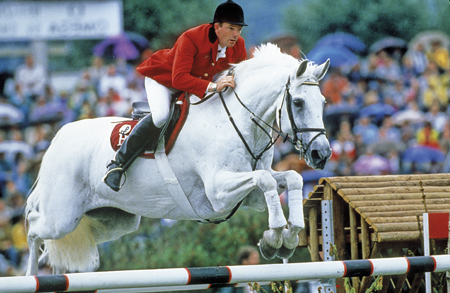
New stars – John Whitaker and Milton
At the beginning of this article I mentioned that equestrian sports always have lived in famous pairs. In the post-war period there were Fritz Thiedemann with Meteor, Raimondo d’lnzeo with Merano and Francisco Goyoaga with Fahnenkonig, and in the eighties Paul Schockemohle with Deister, Pierre Durand with Jappeloup and John Whitaker with Milton, to mention but a few, who were regarded as figure-heads of our sport.
Perhaps at the moment (1994) we are in a transitional period in which good horses must find their matching riders. But most certiainly there will soon be a new combination to take a prominent place.
And with all this we must not forget that riding in its entirety lives on the phenomenal combinations. In this age of the media in which television plays such an important part it definitely is the exceptional pair, which draws the good broadcasting times.
Apart from this, equestrianism has reacted correctly, by setting up its events more and more professionally, and with more facilities for the spectators. And there is no need for more new classes; one would simply have to make the ones we have better and more efficient. In this search of new ways we definitely have made progress and are getting close to the goal which is to sell quality instead of quantity.
For the riding organizations it is not easy in this time of rapid development to keep pace as fundamentally they consist of volunteers. Yet here as well one can see good trends. By focusing all our energies we should succeed in advancing our sport even further. But we must not lose respect for and love of the ‘dumb’ creature, our partner. The horse is not a piece of sports equipment but our partner. And in all our actions should be to develop what the English so brilliantly call ‘horsemanship’.
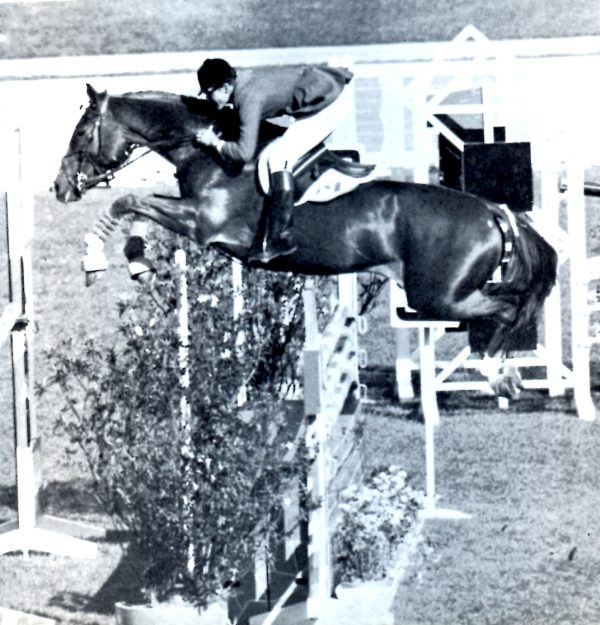
At his last Olympic Games in Mexico, Hans Günter Winkler and the eight-year-old, Enigk – they finished 5th on the individual standings, and took home team bronze.




